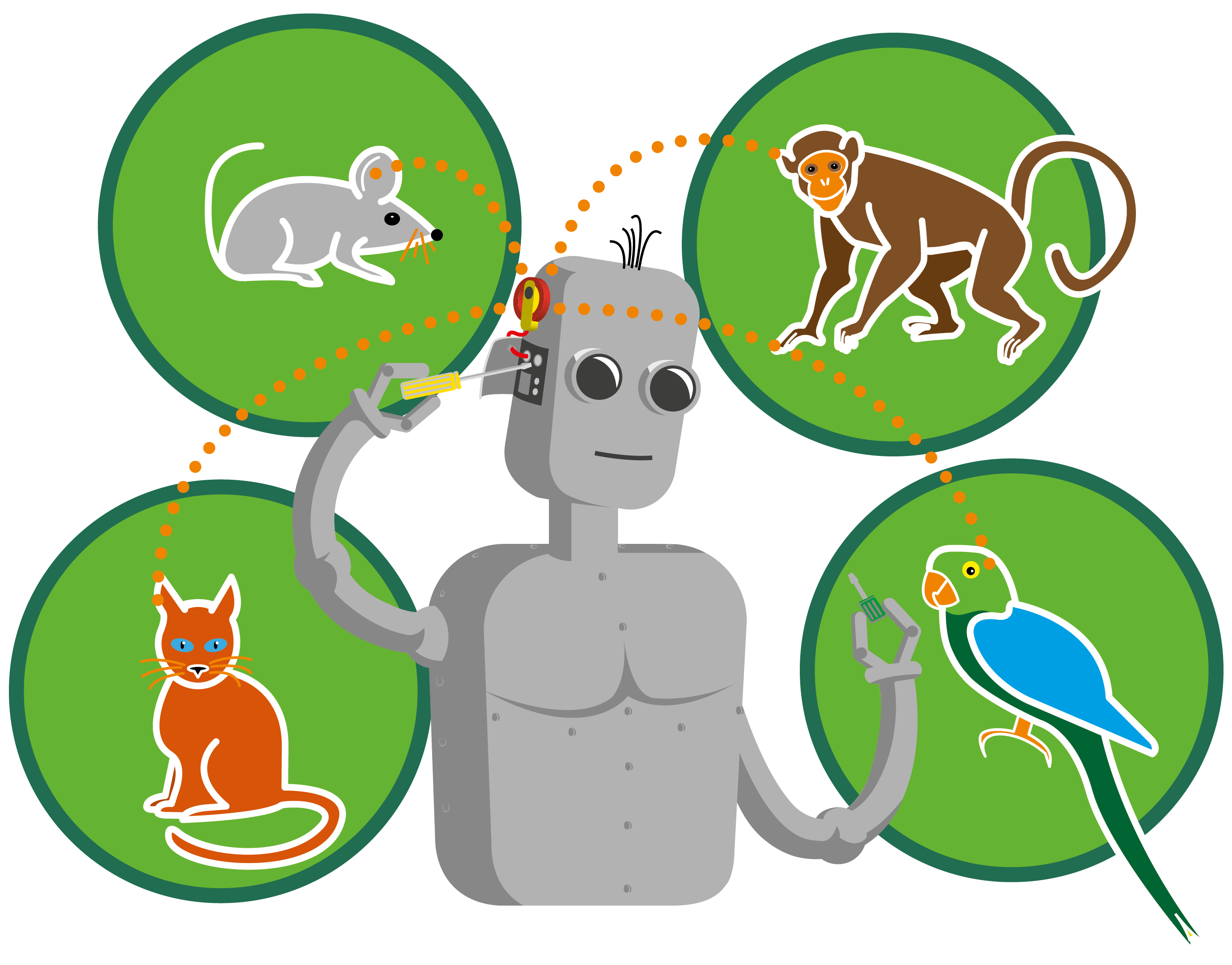Computational investigation of visually guided learning of spatially aligned auditory maps in the colliculus
Keywords:
Auditory Space Map, Learning, Hebb, Map Alignment, Barn Owl, Modelling, Inferior ColliculusAbstract
The development of spatially registered auditory maps in the external nucleus of the inferior colliculus in young owls and their maintenance in adult animals is visually guided and evolves dynamically. To investigate the underlying neural mechanisms of this process, we developed a model of stabilized neoHebbian correlative learning which is augmented by an eligibility signal and a temporal trace of activations. This 3-component learning algorithm facilitates stable, yet flexible, formation of spatially registered auditory space maps composed of conductance-based topographically organized neu- ral units. Spatially aligned maps are learned for visual and auditory input stimuli that arrive in temporal and spatial registration. The reliability of visual sensory inputs can be used to regulate the learning rate in the form of an eligibility trace. We show that by shifting visual sensory inputs at the onset of learning the topography of auditory space maps is shifted accordingly. Simulation results explain why a shift of auditory maps in mature animals is possible only if corrections are induced in small steps. We conclude that learning spatially aligned auditory maps is flexibly controlled by reliable visual sensory neurons and can be formalized by a biological plausible unsupervised learning mechanism.
References
Feldman, D.E. and Knudsen, E.I. (1997). “An Anatomical Basis for Visual Calibration of the Auditory Space Map in the Barn Owl’s Midbrain,” J. Neurosci. doi: 10.1523/JNEUROSCI.17-17-06820.1997.
Gerstner, W., Lehmann, M., Liakoni, V., Corneil, D., and Brea, J. (2018). “Eligibility Traces and Plasticity on Behavioral Time Scales: Experimental Support of NeoHebbian Three-Factor Learning Rules,” Frontiers in Neural Circuits. doi: 10.3389/fncir.2018.00053.
Hebb, D.O. (1949). The Organization of Behavior: A Neuropsychological Theory (Psychology Press). ISBN 978-1-135-63191-8.
Huo, J. and Murray, A. (2009). “The adaptation of visual and auditory integration in the barn owl superior colliculus with Spike Timing Dependent Plasticity,” Neural Netw. doi:10.1016/j.neunet.2008.10.007.
Hyde, P.S. and Knudsen, E.I. (2000). “Topographic projection from the optic tectum to the auditory space map in the inferior colliculus of the barn owl,” J. Comp. Neurol. doi:10.1002/(SICI)1096-9861(20000529)421:2⟨146::AID-CNE2⟩3.0. CO;2-5.
Knudsen, E.I. (1998). “Capacity for Plasticity in the Adult Owl Auditory System Expanded by Juvenile Experience,” Science. doi:10.1126/science.279.5356.1531.
Knudsen, E.I. and Brainard, M.S. (1991). “Visual instruction of the neural map of auditory space in the developing optic tectum,” Science. doi:10.1126/science. 2063209.
Knudsen, E.I. and Knudsen, P.F. (1989). “Vision calibrates sound localization in developing barn owls,” J. Neurosci. doi:10.1523/JNEUROSCI.09-09-03306.1989.
Knudsen, E.I. and Konishi, M. (1978). “A neural map of auditory space in the owl,” Science. doi:10.1126/science.644324.
Linkenhoker, B.A. and Knudsen, E.I. (2002). “Incremental training increases the plasticity of the auditory space map in adult barn owls,” Nature. doi:10.1038/ nature01002.
Oja, E. (1989). “Neural networks, principal components, and subspaces,” Int. J. Neural Syst. doi:10.1142/S0129065789000475.
Witten, I.B., Knudsen, E.I., and Sompolinsky, H. (2008). “A Hebbian Learning Rule Mediates Asymmetric Plasticity in Aligning Sensory Representations,” J. Neurophysiol. doi:10.1152/jn.00013.2008.
Additional Files
Published
How to Cite
Issue
Section
License
Authors who publish with this journal agree to the following terms:
a. Authors retain copyright* and grant the journal right of first publication with the work simultaneously licensed under a Creative Commons Attribution License that allows others to share the work with an acknowledgement of the work's authorship and initial publication in this journal.
b. Authors are able to enter into separate, additional contractual arrangements for the non-exclusive distribution of the journal's published version of the work (e.g., post it to an institutional repository or publish it in a book), with an acknowledgement of its initial publication in this journal.
c. Authors are permitted and encouraged to post their work online (e.g., in institutional repositories or on their website) prior to and during the submission process, as it can lead to productive exchanges, as well as earlier and greater citation of published work (See The Effect of Open Access).
*From the 2017 issue onward. The Danavox Jubilee Foundation owns the copyright of all articles published in the 1969-2015 issues. However, authors are still allowed to share the work with an acknowledgement of the work's authorship and initial publication in this journal.


